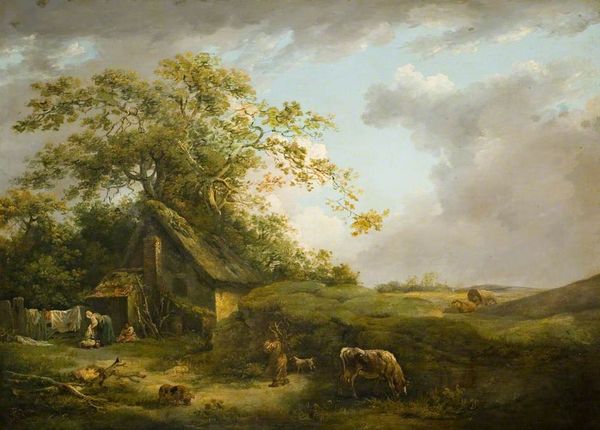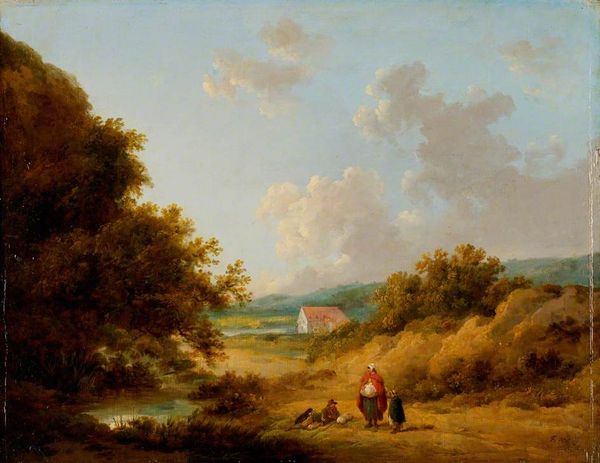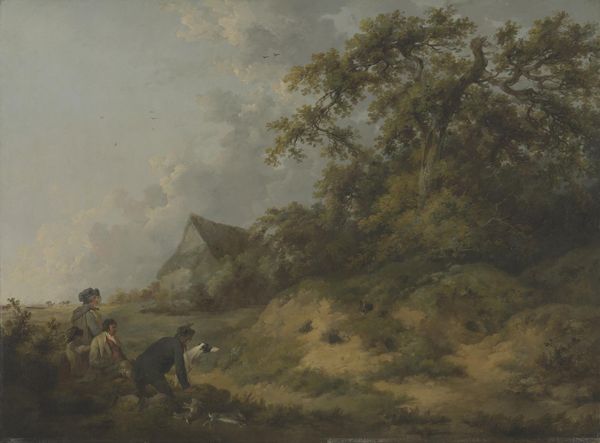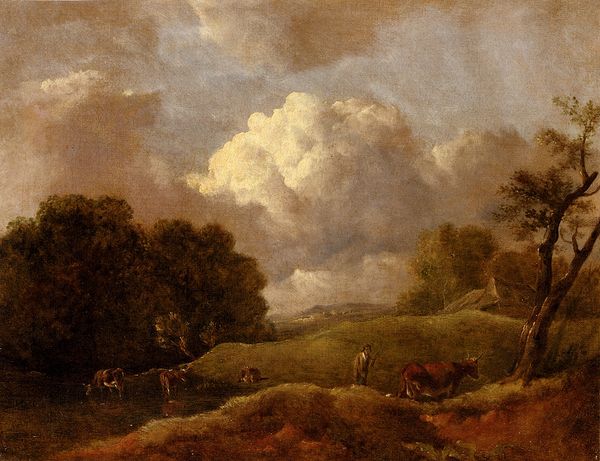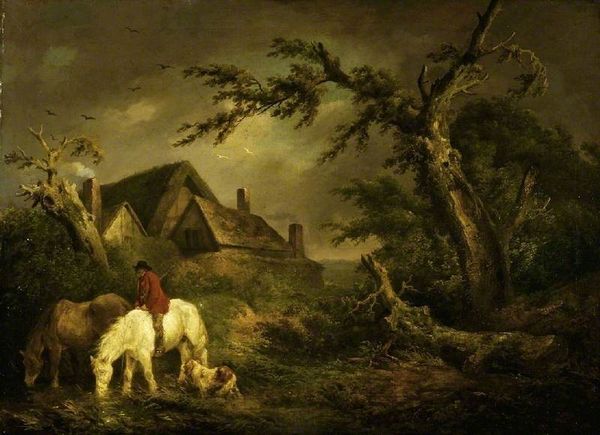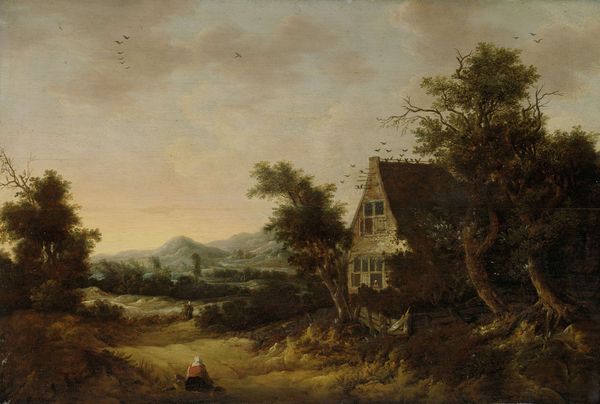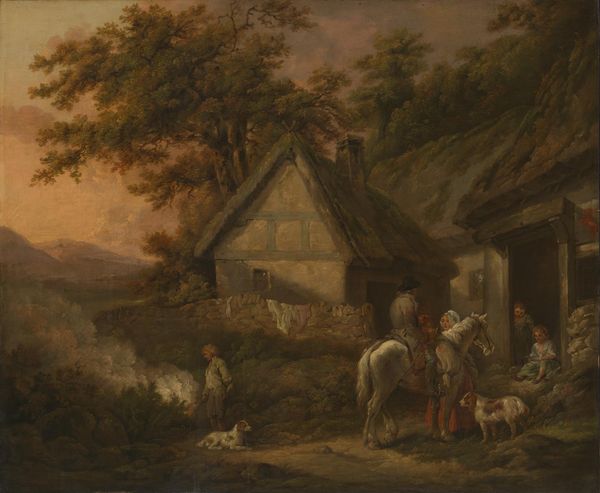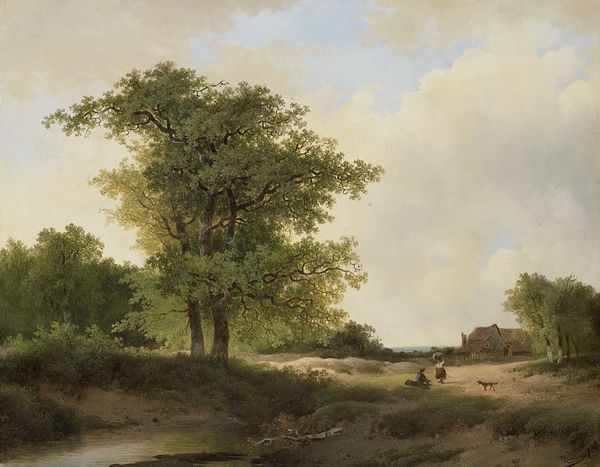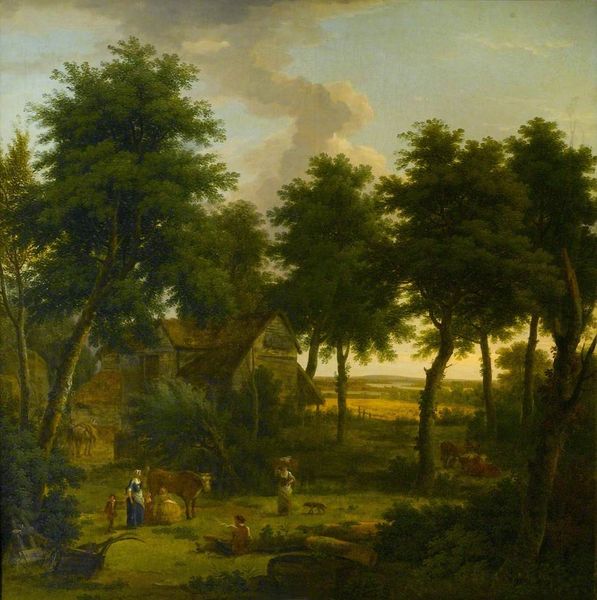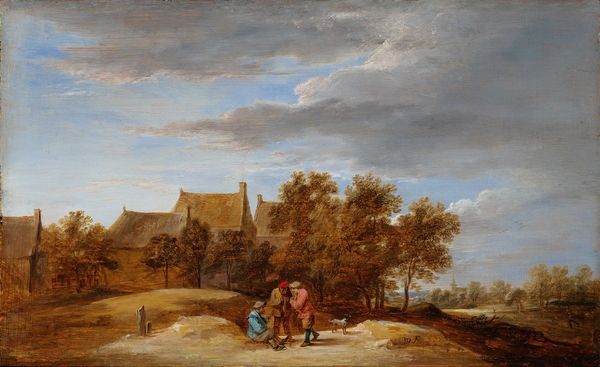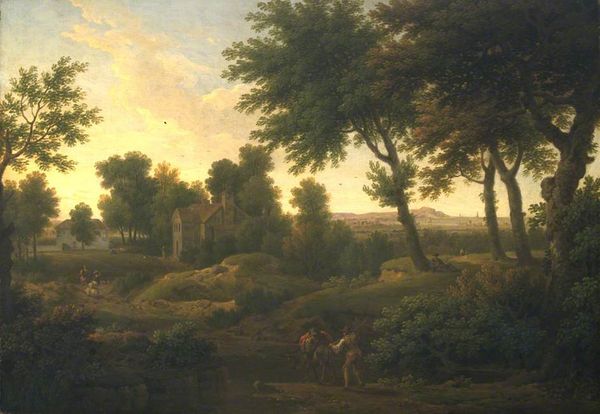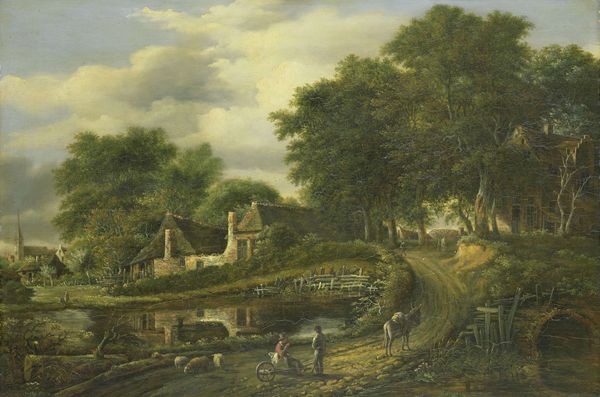
painting, oil-paint
#
sky
#
painting
#
oil-paint
#
landscape
#
oil painting
#
romanticism
#
genre-painting
Copyright: Public domain
Editor: We're looking at "A Windy Day" by George Morland, an oil painting showing figures in a blustery landscape. I find the atmosphere quite melancholic, almost oppressive, with the dark clouds gathering overhead. How do you interpret this work? Curator: It's interesting that you use the word "oppressive." Beyond the aesthetic qualities, let's consider the social landscape of the time. Morland, though popular, faced his own financial and social struggles. The figures, likely rural laborers, are battling the elements, suggesting the hardships and vulnerabilities inherent in their class. Notice the imbalance – nature’s dominance over humanity. How does this power dynamic make you feel in our current era of climate crisis and its disproportionate impact on marginalized communities? Editor: That perspective really shifts my understanding. I was mainly focused on the purely aesthetic aspects of the Romantic landscape tradition, but now I see how it speaks to power structures and vulnerability. Curator: Precisely. The "genre painting" aspect points to everyday life. But whose everyday life is deemed worthy of representation, and how is it framed? Morland's choices are not neutral. Think about the labour involved; it contrasts with the implied leisure of the land-owning classes typically celebrated in art of this period. Editor: So, the painting might subtly be critiquing the social order by highlighting the realities faced by those lower down the economic ladder? Curator: Exactly! It invites us to consider who is seen, who is unseen, and whose stories are told—or left out—in the grand narratives of history. Also, think of who got to acquire a landscape painting in those days and imagine its display. It perhaps reveals that someone of higher status consumed it to decorate a home. Editor: I see. Thinking about art in this socio-political context makes it much more powerful. Thanks! Curator: It is my pleasure to highlight it. Art reflects its own cultural setting, but our interpretations continue to shape the relevance it can have on today’s critical problems.
Comments
No comments
Be the first to comment and join the conversation on the ultimate creative platform.
